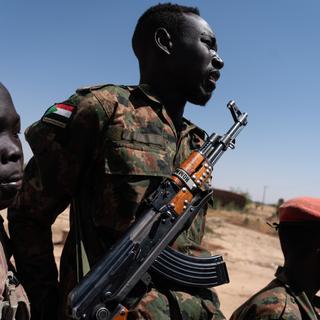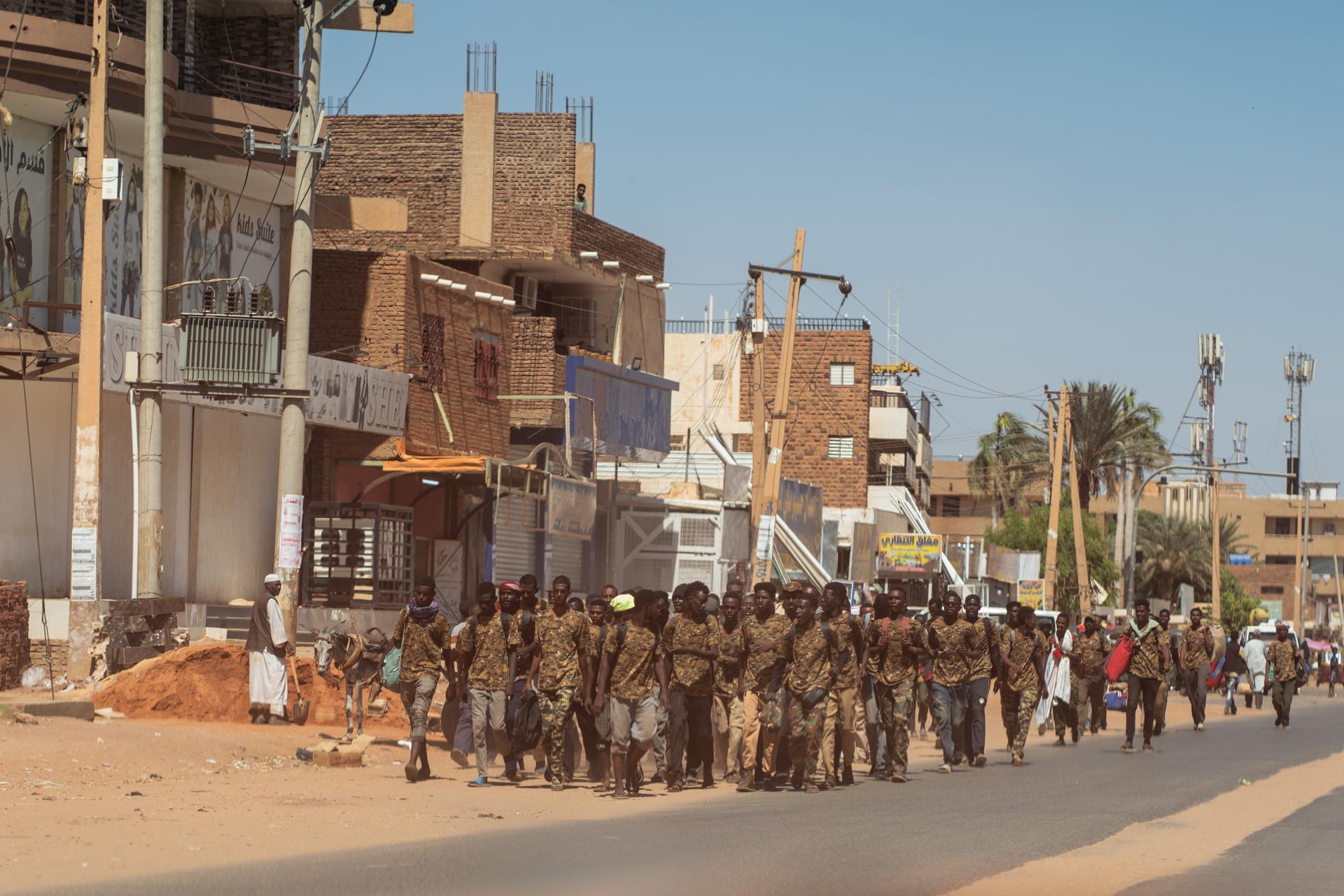


The lost children of Sudan's revolution: 'We fight today alongside the men who fought us yesterday'
Feature'In Sudan, a total war (5/8).' Since the conflict broke out in April 2023, many pro-democracy activists, who first opposed Omar al-Bashir's regime and then the putschist generals, have joined the ranks of the regular army to face paramilitary militias.
Perched on the roof of a building, whose railing had been blown off by a shell, Kamaleddine Al-Nour contemplated the plumes of black smoke rising into the sky, above the northern suburbs of Khartoum. There, in the Bahri district, where he was born, fighting had been raging between soldiers of the Sudanese Armed Forces (SAF) – from whom Le Monde obtained permission to visit the country – and Rapid Support Forces (RSF) paramilitary fighters. Control of the Sudanese capital was at stake. As the sun set, missiles rained down on buildings, blurring the horizon behind a dark cloud.
Three years ago, perched on barricades set up in the Bahri streets, Al-Nour, then a young revolutionary, set fire to tires in protest against the coup jointly led by generals Abdel Fattah Abdelrahman Al-Burhan and Mohammed Hamdan Dagalo, known as "Hemedti," on October 25, 2021. By ousting the civilian government, the two officers, then still allies, put a swift halt to the democratic transition that had been started in the wake of the 2019 revolution against the Islamist military regime of Omar al-Bashir.
Moments after the coup was announced, a general strike was announced in factories, and civil disobedience was encouraged from the minarets of mosques. Every week, hundreds of thousands of Sudanese people, of all ages, took to the streets to block the arrival of a new military regime. At the head of the demonstrations, Al-Nour and his followers, the ghadiboon (literally meaning "angry" in Arabic), spearheaded the protests.

Masked, armed with sheet-metal shields and construction helmets, they threw stones to confront junta soldiers, who fired live ammunition into the crowds. Three years on, the ghadiboon now had shaved hair, were wearing khaki fatigues and patrolled the front lines in the Sudanese capital, with machine guns slung over their shoulders. Since the start of the war between Al-Burhan's SAF and Hemedti's RSF, on April 15, 2023, they've chosen their side. They were fighting alongside the Sudanese army.
"Today we face an existential war. The RSF is jeopardizing Sudan's unity. The war threatens to disintegrate our society and everything we hold dear. So we took up arms," explained Al-Nour, who had joined the SAF's training camps a few months ago. "In demonstrations or on the battlefield, we've been shedding our blood for our country for a long time. We're defending our people. In this sense, the war is the continuation of the revolution," he claimed.
You have 77.67% of this article left to read. The rest is for subscribers only.
